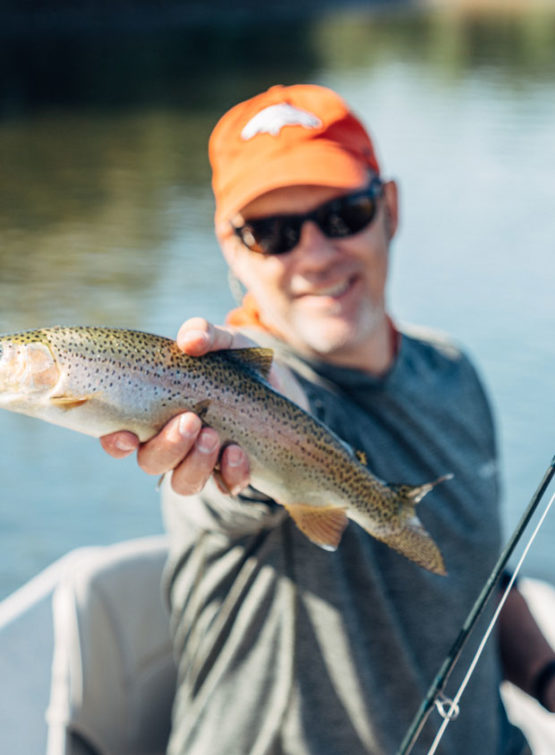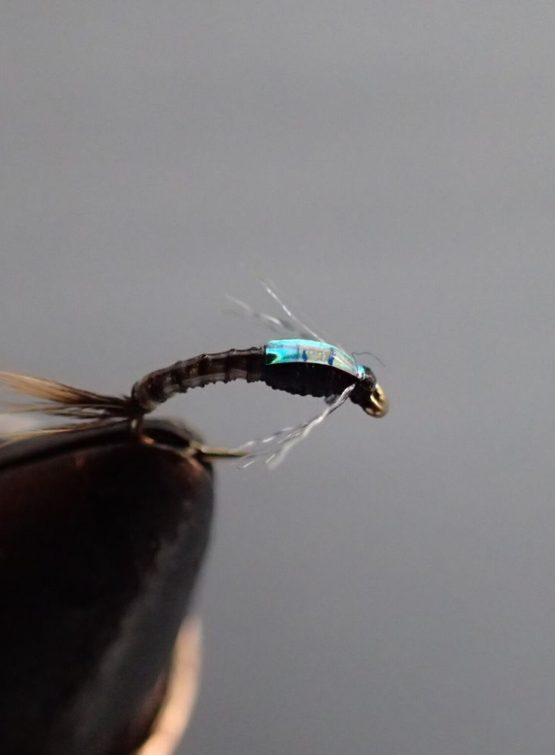Strike indicators play an extremely important role in your success as an angler. But, with so many options out there, it can be hard to pick just one. So, what is the best strike indicator for fly fishing?
In short, the Thingamabobber is widely considered to be the best all-around strike indicator for fly fishing. Due to their buoyancy, ease of casting in windy conditions, and sensitivity to strikes, Thingamabobbers are hard to beat. Additionally, since they are sold in multiple sizes, you can use them in almost any fly fishing situation.
That said, every strike indicator has its benefits and drawbacks. So, while the Thingamabobber is a good choice for most occasions, there are situations where it might not be your best option.
Additionally, when you’re nymphing for trout, choosing the right strike indicator can be the difference between a successful day on the water, and a big ol’ skunk! So, to put it bluntly, this is a decision you don’t want to get wrong.
And that’s exactly why I am writing this article.
In this guide, I am going to cover 7 of the best strike indicators for fly fishing, and the situations in which situations they work best.
Let’s dive in!
Disclaimer: This post may contain affiliate links, meaning we will receive a small commission (at no cost to you) if you click through and make a purchase.1. Thingamabobber
Throughout all my years of fly fishing, I have tried just about every strike indicator on the market. Between yarn indicators, stick-ons, and even a self-made indicator fashioned from a braces rubber band and stain-proof carpet teased with velcro, I’ve been around the block a time or two.
And after all that experience, I can tell you with quite a bit of confidence that the Thingamabobber is the best choice for most fly fishing situations. (Hence why it is at the top of this list.)
Thingamabobbers come in four different sizes: ½”, ¾”, 1”, and 1 ¼”. The smaller sizes work great for smaller streams and rivers — where you are more likely to encounter skittish fish — while the two bigger sizes work great for larger rivers and lakes.
It might sound obvious, but the main thing that makes Thingamabobbers such great strike indicators is that they float so well. I mean, after growing up in a world where yarn indicators — which required a fresh application of floatant about every 10th cast — were the only option, Thingamabobbers were a breath of fresh air. Beyond that, thingamabobbers are easy to cast into the wind. Which, once again, is a nice change of pace from yarn indicators that suck the big one on a windy day.
So, if Thingamabobbers are so wonderful, why would I even think to include six other items on my list of the best strike indicators? Well, that’s simple, they are a bad choice when you’re casting to skittish fish.
You see, Thingamabobbers are less than subtle when you’re trying to make a gentle cast. They land abruptly, and disturb the water; which, is obviously a bad thing. So, if you’re ever in a fly fishing situation where stealth is a high priority, the Thingamabobber isn’t a great option.
Related Content:
- Do You Need a Strike Indicator? “Naked Nymphing”
- 25 Tips For Fly Fishing Small Streams And Creeks
- 21 Common Fly Fishing Mistakes To Avoid
- 25 Proven Tips To Catch More Trout
- How To Tie A Double Nymph Rig? A Step-By-Step Guide
- What Is An Attractor Fly? (With 10 Examples)
2. Airflo Airlock Indicator
Airflo Airlock indicators are very similar to Thingamabobbers in that they are a little, air-filled plastic bubble that floats on the water. However, they come with one major difference: the way they attach to your leader.
As opposed to a Thingamabobber which you have to essentially tie to your leader, Airflo Airlock indicators have a fastening system that allows you to attach them without looping and kinking your line. This is a great little invention if you are constantly adjusting the placement of your indicator.
However, with the added weight of the little plastic fastener, these actually disturb the surface of the water more than a Thingamabobber. So, I only recommend you use these indicators on larger bodies of water where their lack of subtlety won’t be an issue.
3. New Zealand Strike Indicator
The New Zealand Strike Indicator is probably the most unique indicator on this list. It is similar to a regular yarn indicator, except for the fact that you get to determine how much yarn you use, and they are much easier to move up and down your leader.
Additionally, unlike the Thingamabobber, this indicator is great for delicate casting situations when you don’t want to spook any fish.
That said, the downside to these indicators, is that they require the new zealand indicator tool in order to attach them to your leader. When you first buy this indicator, it comes in a kit with everything you need, but you do have to keep the tool loaded with little sections of rubber tubing; which can be a little inconvenient. Also, like the yarn indicator, these can be a pain to cast in the wind.
4. Foam Indicator
The more traditional, foam indicator is another great option. While it may look similar to a yarn indicator, it does not need to be dressed with floatant, which is really nice. Also, it is easier to cast in the wind.
I would place the foam indicator as a good middle-ground between a Thingamabobber and a New Zealand Indicator. In other words, if you like the convenience of a thingamabobber, with a more delicate nature of yarn, then the foam indicator is a great choice.
5. CorQs Strike Indicator
CorQs Strike Indicators are extremely buoyant, because they are made of, you guessed it, cork. And while in most cases, the Thinagmabobber is a slightly better option, these indicators really shine in one particular situation: wind.
Of all the indicators on this list, CorQs are, by far, the easiest to cast on windy days.
Seriously, I can think of multiple occasions in which I actually swapped out my Thingamabobber for a CorQs indicator, just because I needed less wind resistance.
So, if you find yourself consistently fishing in windy conditions, it’s a good idea to have one or two of these on-hand.
6. Stick-On Oval Indicators
Stick-on Oval indicators are probably the most convenient strike indicators on this list. They don’t take up much room in your vest or pack, they attach to your leader without any kind of knot or tool, they are pretty easy to cast in the wind, and they are great for delicate casting situations.
In situations where you just need to get an indicator on your line quickly, these should be your go-to.
However, like all the other indicators on this list, there are a few drawbacks to these indicators. For one, I have had these fall off my line on multiple occasions, which I can’t say has happened to me with any of the other indicators on this list. On the other hand, I have also had these indicators basically weld themself to my line on a hot day, which makes them near impossible to get off; also annoying. Finally, these things just don’t seem to maintain their ‘stickiness’ over the course of a few months in storage. So, if you plan to use them, you should buy a new pack every season.
7. Dry Fly
When it comes to strike indicators, the dry fly is often overlooked and underrated. Now, I realize that you can’t really use a dry fly as an indicator for deep water fly fishing situations. However, if you ever find yourself nymphing shallow water, setting yourself up with a dry dropper rig can seriously increase your chances of catching a fish.
If you’re going to use a dry fly as an indicator, I recommend using a large, buoyant fly like an Amy’s Ant, or a Stimulator. But, if you are fishing small streams, even a small Parachute Adams can do the trick.
So, which kind of strike indicator is your favorite? Leave a comment below.
Oh, and if you haven’t subscribed to the Fly Fishing Fix email list, you should make that your #1 priority, and do it right now! Why? Well, it’s rumored that we won the Academy Award for Best Email List Ever Made. Though, I can’t actually confirm that, because while all those actors and actresses were giving each other awards, I was probably busy landing like a 30” trout. Oh, and if you’re wondering ‘who’ I was wearing the night of the Oscars… Simms. Take that Vera Wang!











thingamabobber seems to kink your leader, corqs are too hard to adjust up and down your leader..air lock seems to work best for me